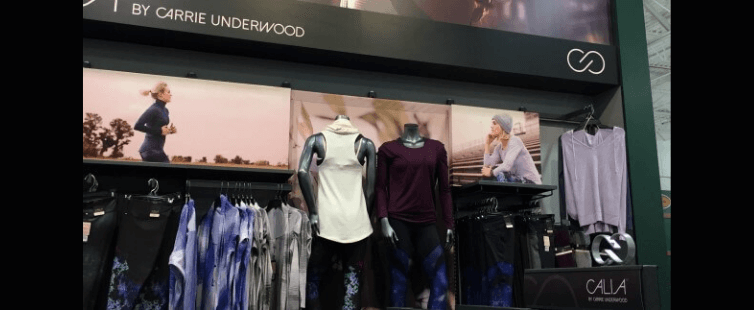Athleisure Momentum Continues

While athleisure had a rapid pre-pandemic rise at retail, its growth has accelerated as sports-inspired apparel became more work-from-home than workout.
From private label to luxe
Brands ranging from private label and mainstream licenses to luxe labels such as Louis Vuitton, Gucci and Tori Burch have flooded the market. U.S. Sales of athleisure apparel was forecast to hit $77.2 billion in 2020, up from $55 billion five years ago and projected to reach $93 billion by 2023.
Athleisure was forecast to account for 31% of total U.S. apparel sales during the recent holidays, up from 26% a year earlier, according to NPD. And while demand may slow as the pandemic eases and consumers gradually return to offices, there’s every sign that the athleisure trend will persist.
For example:
- American Eagle Outfitters last week took the wraps off plans to open another 200 locations of Gen Z-favorite Aerie by 2023 – there are 148 stores currently — that specialize in selling activewear, underwear and swim apparel, and to double the division’s annual sales to $2 billion over the same time period.
- Dick’s Sporting Goods has expanded the assortment and space dedicated to its Calia by Carrie Underwood collection – launched in 2014 — as the brand became its number two selling brand in the women’s category.
- Gap expanded Old Navy’s activewear assortment during the quarter ended Oct. 31 at the same time as its Athleta chain, which carries an even broader assortment of activewear, reported record same-store sales gains in same period.
- Kohl’s is launching its private label FLX activewear line this spring, while Target introduced its All In Motion line last year.
Those private label and licensed labels are in addition to long-time athleticwear stalwarts such as Nike, Reebok, Puma and Adidas, the latter having worked with designer Stella McCartney since 2004.
Then there’s Lululemon, which rode the wave of men’s and women’s athleisure apparel to 491 stores and $3.97 billion in sales in the fiscal year ended Feb. 2, 2020. It also acquired at-home fitness equipment supplier Mirror last year and has installed its products in 18 Lululemon stores where it plans to cross-promote the gear with apparel.
Changed expectations
“Athleisure has changed consumer expectations regarding comfort and fit of their apparel,” Coresight Research Founder and CEO Deborah Weinswig said in a blog post. “We expect the boundaries between athleisure and sportswear and casual wear will continue to blur.”
Yet despite the high profile brands and designers, the brands are positioned as “added value” to the apparel’s materials and design, says Sami Souid, President of IHL Group. IHL sells activewear and ready-to-wear under Aeropostale, Tahari, Daisy Fuentes and other licenses and is weighing bringing them into athleisure, where it currently sells products under its own brands, says Souid.
“It’s really the aesthetics that is driving the [athleisure] business more than anything else,” says Souid. “There is no doubt design, quality and look come first and brand follows. Brand is an added value.”
And while the high-profile athletic brands such as Nike and Adidas carry value, other labels are less important especially when it comes to secondary brands, says Richard Cotler, Founding Partner at Gloria Vanderbilt licensee Melwood Partners.
“Every buyer we speak with is pushing us for athleisure product and it has morphed into comfort, casual stuff,” says Cotler.




